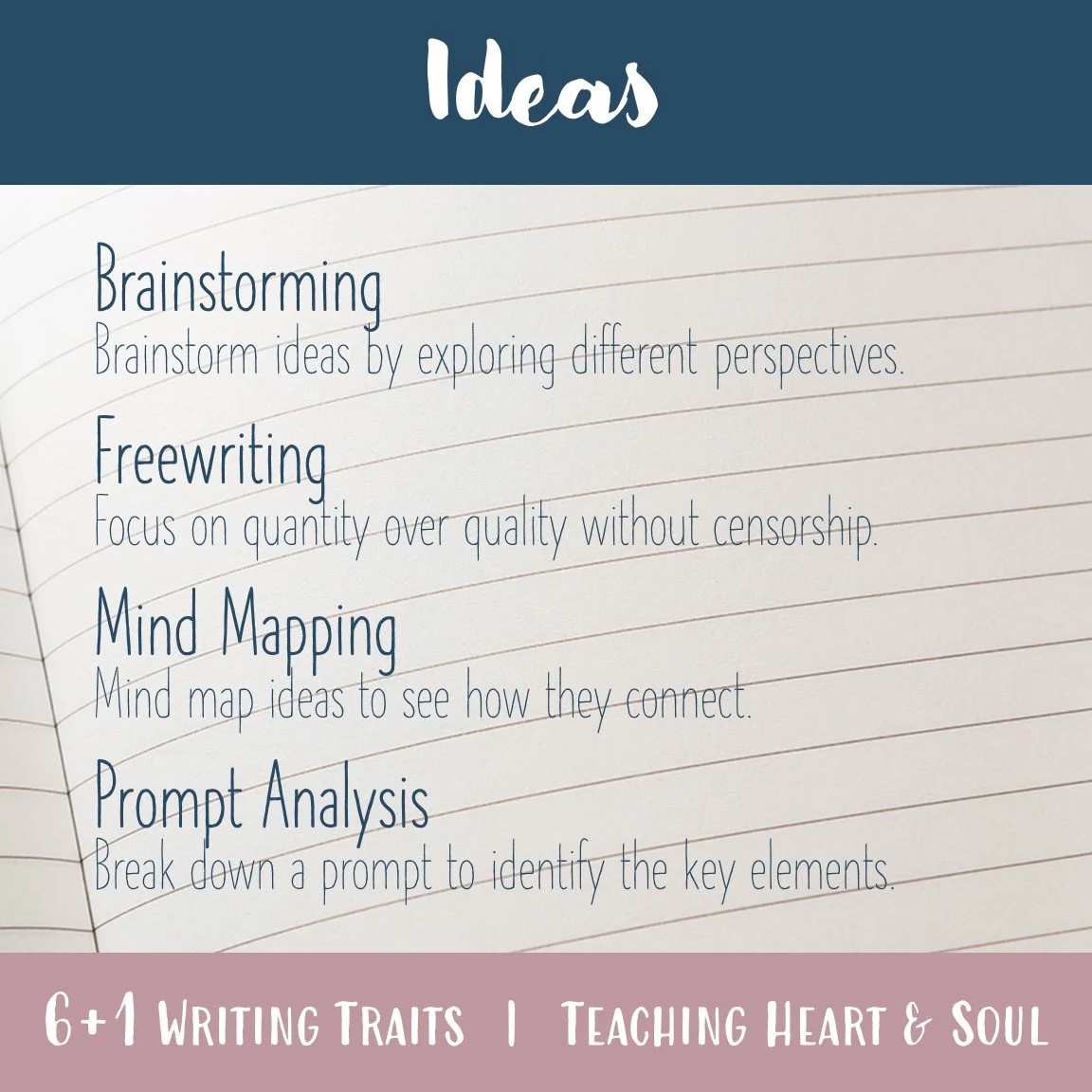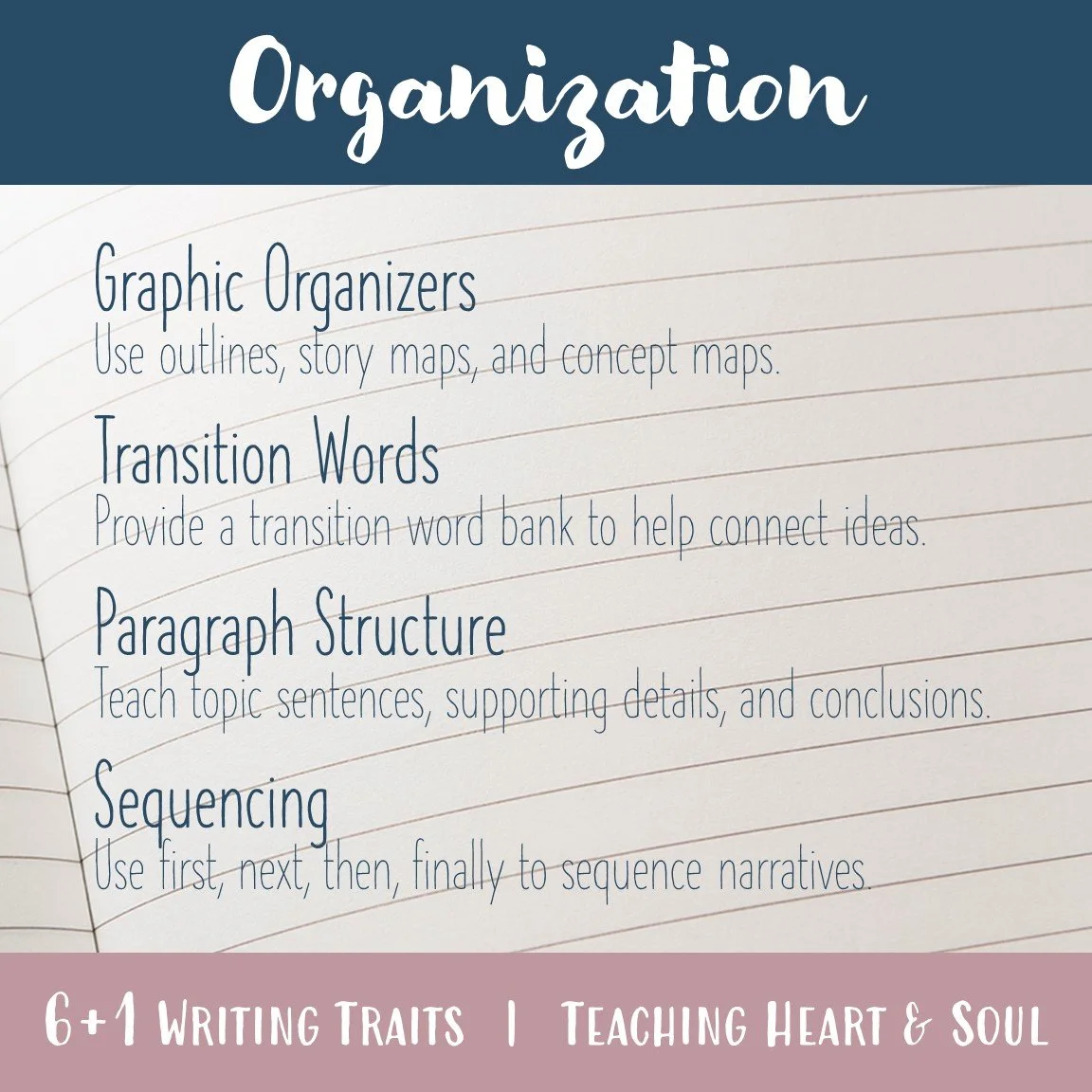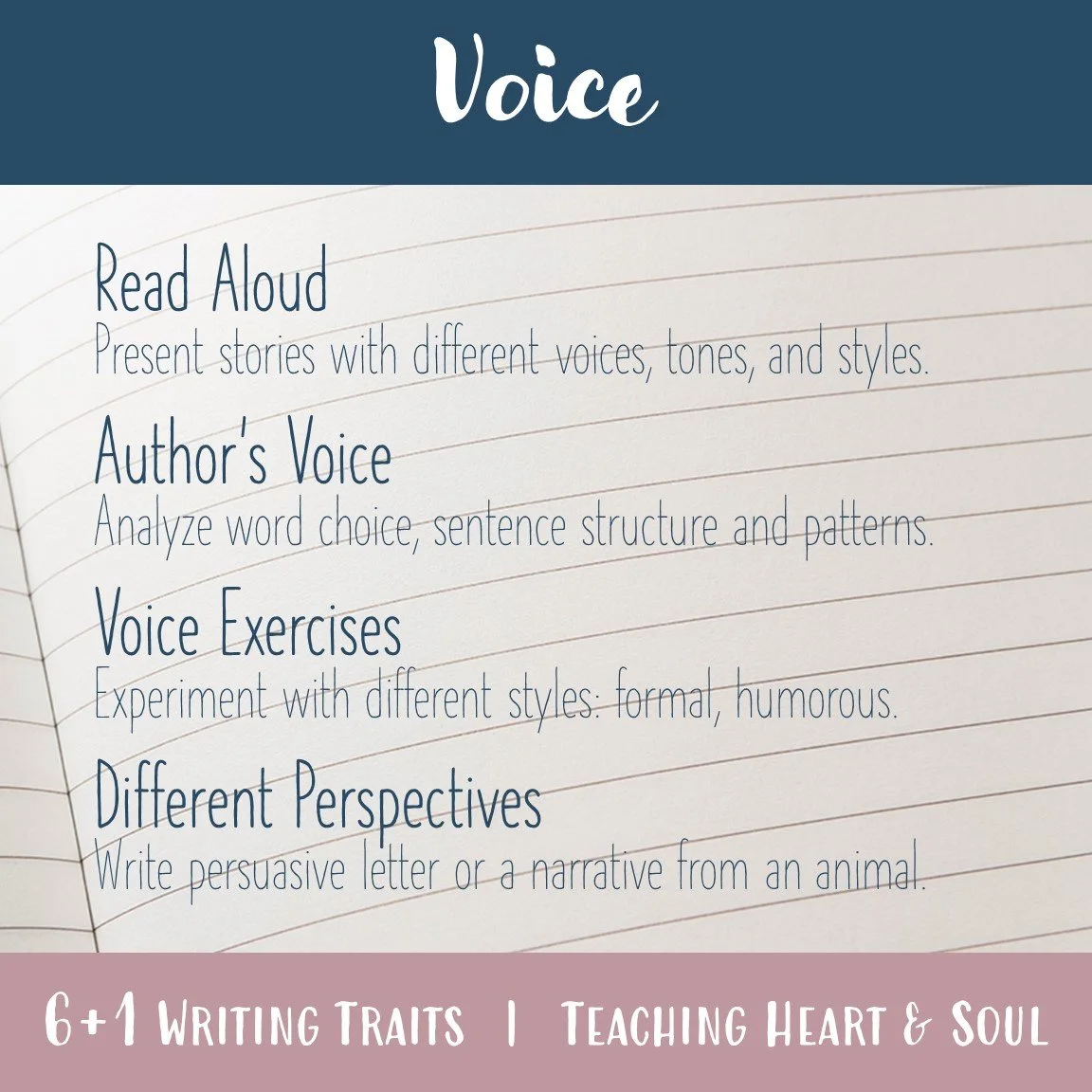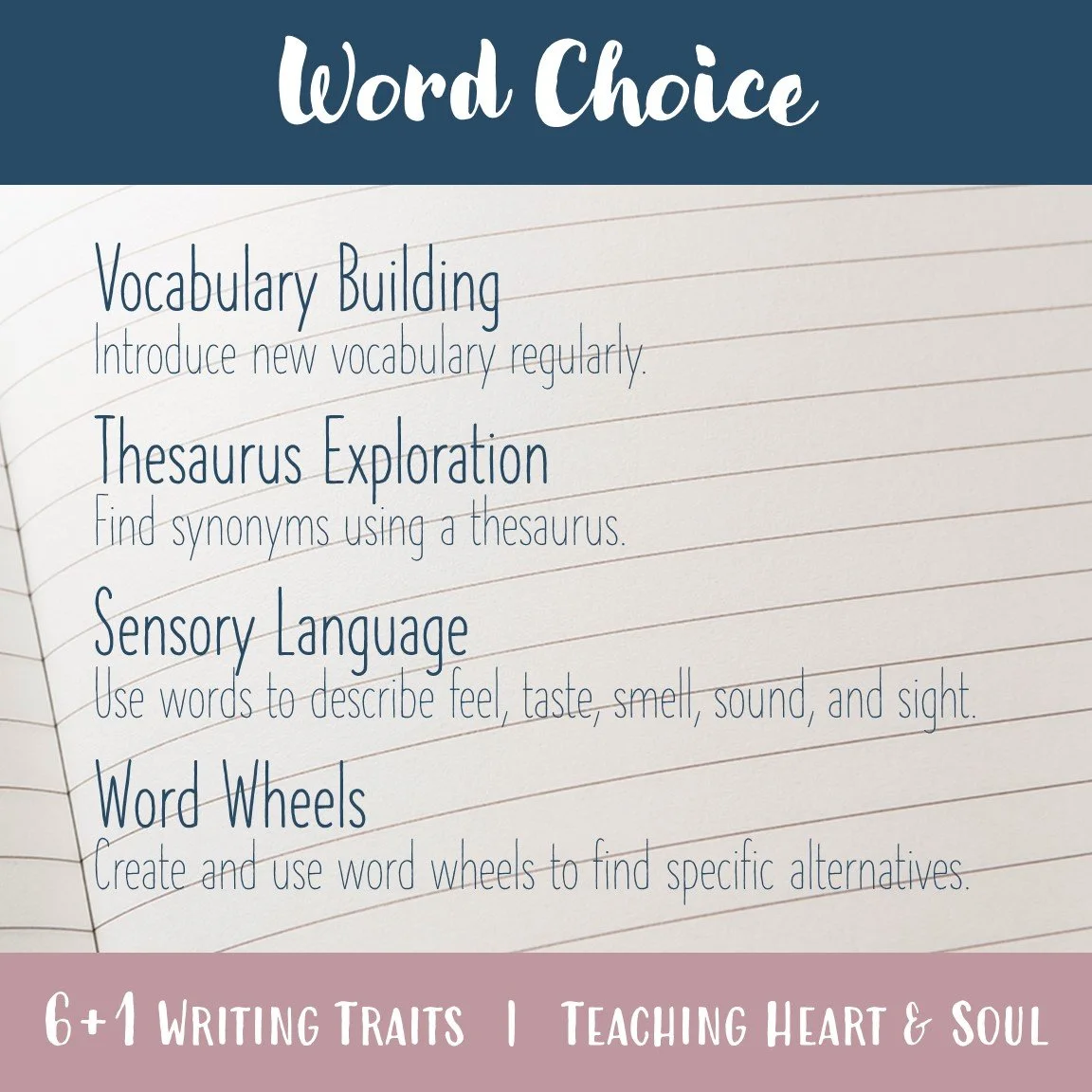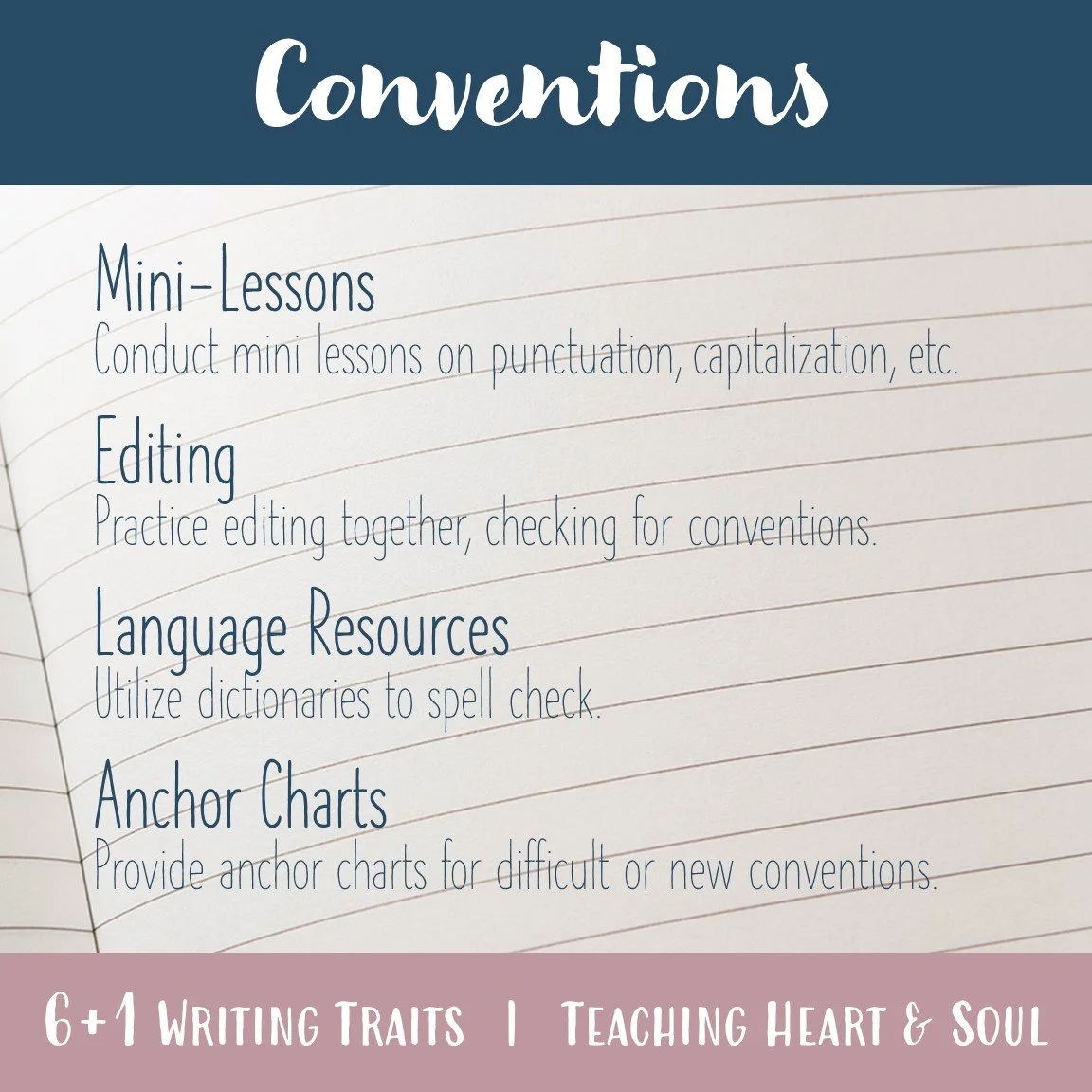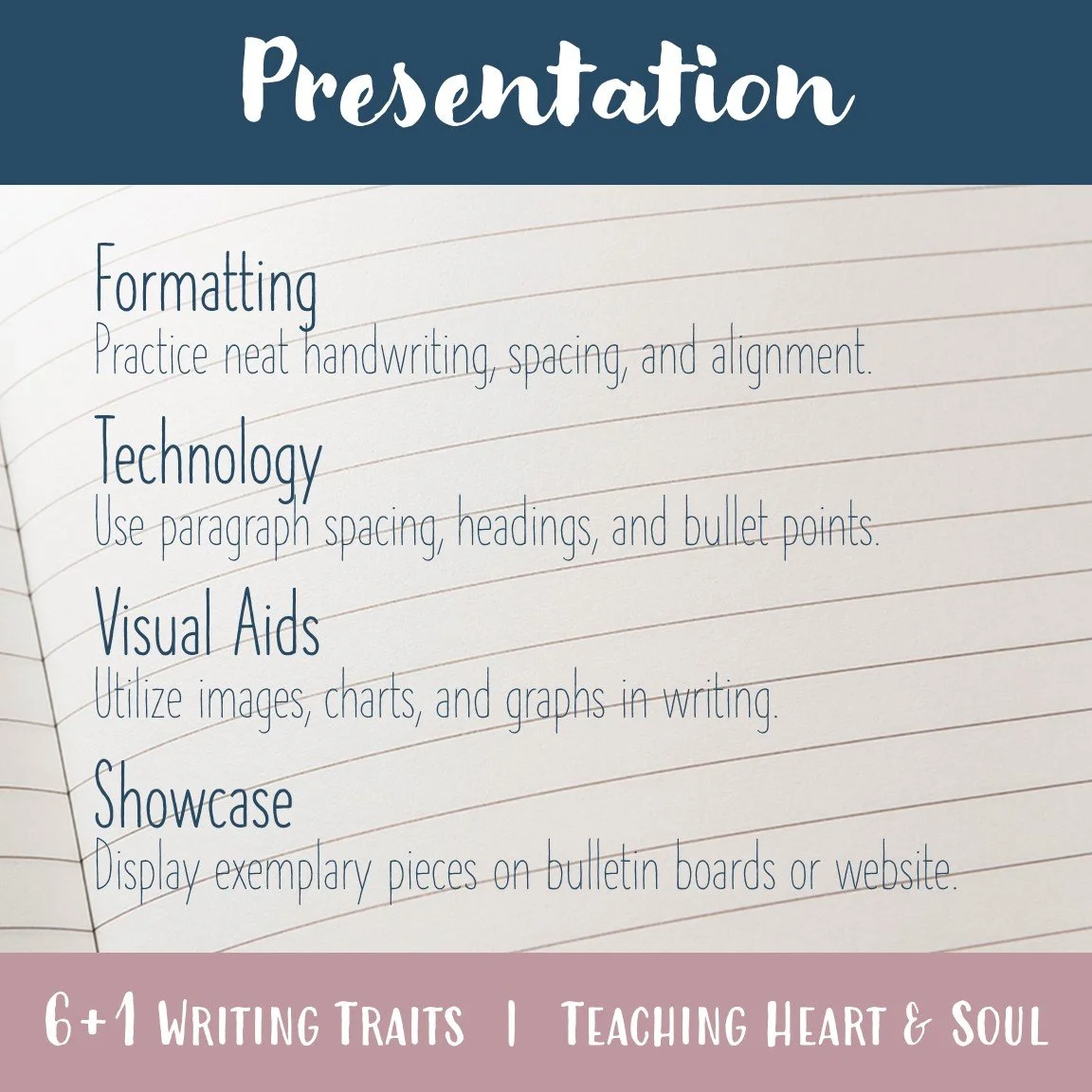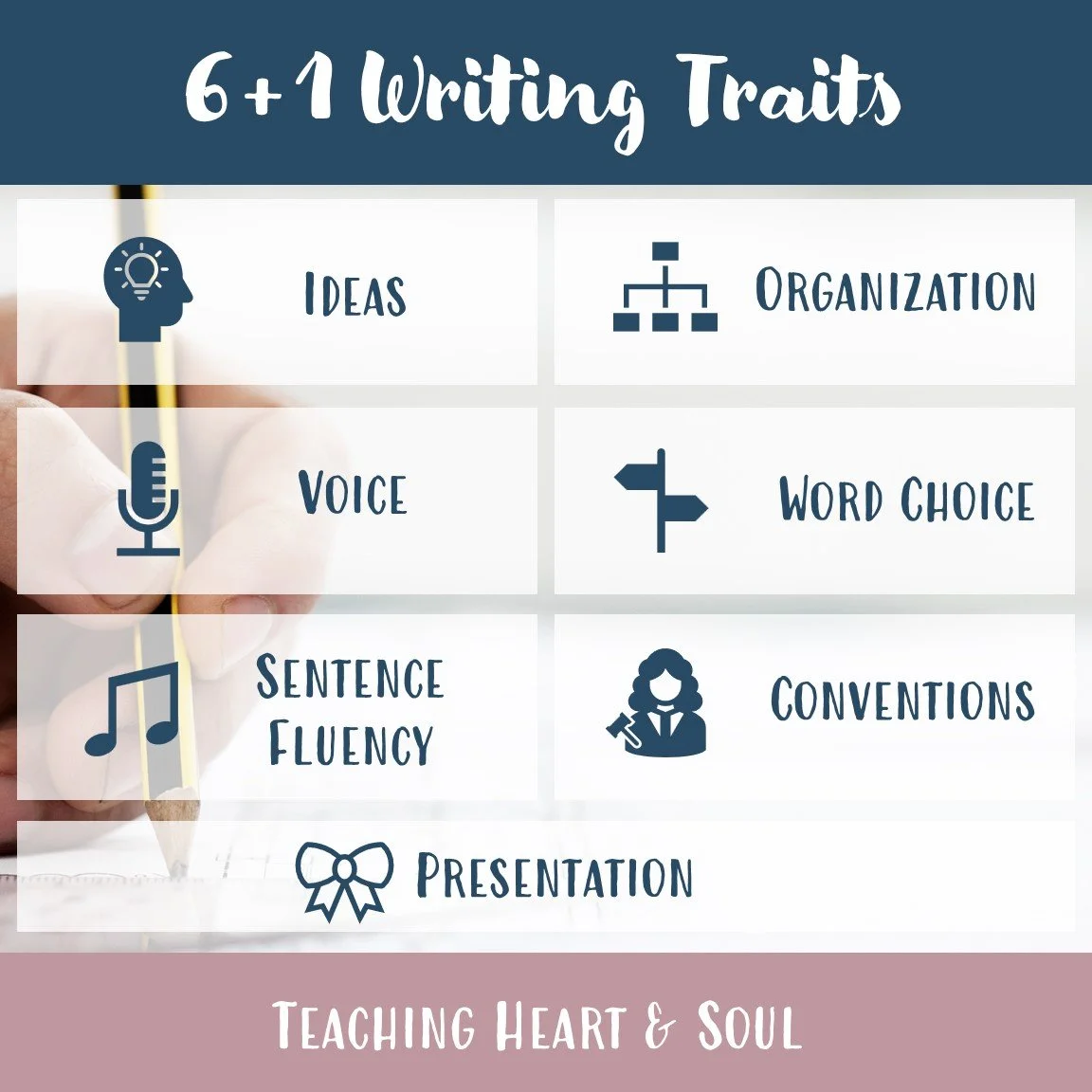6+1 Writing Traits to Guide the Writing Process and Assess Student Writing
The 6+1 Writing Traits is a widely recognized framework developed by Ruth Culham to guide and assess the quality of writing using seven traits of writing. This comprehensive approach to teaching writing provides a writing model to improve writing skills and assess student writing.
Trait One: Ideas
The Heart of the Message
"Ideas make up the content of the piece of writing -- the heart of the message." (6+1 Traits of Writing by Ruth Culham)
Ideas constitute the core content of good writing that drives the narrative or argument and captivates the readers. This trait encompasses the depth, originality, and clarity of the writer's thoughts, concepts, and information.
Strong ideas not only engage the audience but also demonstrate the writer's ability to think critically and imaginatively. Effective writers generate compelling ideas by brainstorming, conducting research, and tapping into their own experiences and knowledge. Skillful utilization of relevant details, vivid descriptions, and thoughtful examples further enriches the ideas, bringing the writing to life and making it meaningful to the readers.
The ideas trait is fundamental as it lays the foundation for a quality writing piece, setting the stage for the other six traits to shine.
Sparking Inspiration
Brainstorming
Start by teaching students various brainstorming techniques to generate ideas. Encourage them to explore different angles, perspectives, and connections related to a given topic. Provide opportunities for collaborative brainstorming sessions, where one student can bounce ideas off another and build upon each other's thoughts.
Freewriting
Introduce freewriting exercises to help students tap into their creativity and generate ideas without constraints. Encourage them to write continuously for a set period, focusing on quantity over quality. Remind students that the purpose is to let their thoughts flow freely without self-censorship.
Reading & Research
Expose students to a wide range of texts, including literature, non-fiction, and informational articles, to expand their knowledge and spark new ideas. Encourage them to engage with the text actively, taking notes, asking questions, and making connections. Discuss the ideas presented in the texts to inspire students and generate further discussions and ideas.
Visualization & Mind Mapping
Teach students visual thinking techniques such as mind mapping or concept mapping. These tools can help them visually organize and connect their ideas, allowing for a clearer understanding of the relationships between different concepts and the development of new ideas.
Prompt Analysis
Teach students to critically analyze writing prompts or assignment instructions. Encourage them to break down the prompt, identify key elements, and consider multiple angles or approaches to the given topic. By thoroughly understanding the prompt, students can generate ideas that directly address the requirements.
Trait Two: Organization
The Logical Order
"Organization is the internal structure of the piece, the thread of meaning, the logical pattern of the ideas." (6+1 Traits of Writing by Ruth Culham)
Organization plays a pivotal role in allowing writers to present their thoughts in a coherent and easily comprehensible manner. It involves arranging ideas, information, and arguments in a purposeful sequence, creating a smooth flow of thought. A well-organized piece of writing enables readers to follow the writer's logic, ensuring that the message is conveyed effectively.
When a piece of writing lacks organization, it becomes challenging for readers to navigate through the text and grasp the intended meaning. Disorganized writing can lead to confusion, frustration, and a loss of interest. Conversely, skillful message organization often enhances the clarity and impact of the message, enabling readers to engage more deeply with the content.
To achieve effective organization, writers employ various strategies such as clear introductions, logical transitions between paragraphs, and cohesive conclusions. They carefully structure their ideas, arranging them in a logical order that supports the central theme or thesis of the piece. This internal structure provides readers with a roadmap to follow, enabling them to make connections between ideas and understand the writer's intended message.
Getting Your Ducks in a Row
Model Texts
Start by analyzing and discussing well-organized texts with your students. Choose a variety of texts, such as essays, stories, or articles, and highlight their organizational structures. Point out how the introduction, body paragraphs, and conclusion are connected and flow logically.
Graphic Organizers
Introduce graphic organizers, such as outlines, story maps, or concept maps, as visual tools to help students plan and organize their writing. Demonstrate how to use these tools to outline main ideas, supporting details, and the sequence of events or arguments. Encourage students to use the graphic organizers as guides while drafting their writing.
Transition Words & Phrases
Teach students the importance of using transition words and phrases to create smooth and logical connections between ideas. Provide lists of transition words and phrases categorized by their function, such as showing addition, contrast, or cause and effect. Guide students in using these transitions effectively to improve the flow and coherence of their writing.
Paragraph Structure
Teach students about the basic structure of a paragraph, including topic sentences, supporting details, and concluding sentences. Explain how each paragraph should focus on a single main idea and how the ideas within the paragraph should be connected and support the main idea.
Sequencing
Emphasize the importance of sequencing and chronological order in certain types of writing, such as narratives or procedural texts. Teach students how to use words like first, next, then, and finally to organize events or steps in a logical and coherent manner.
Trait Three: Voice
The Soul
"Voice is the soul of the piece. It's what makes the writer's style singular, as his or her feelings and convictions come out through the words." (6+1 Traits of Writing by Ruth Culham)
Voice is what sets a writer apart from others, making their work distinctive and memorable. It is the voice that captures the reader's attention, drawing them into the narrative or argument. A strong and authentic voice establishes a connection between the writer and the reader, creating a sense of intimacy and trust.
When a writer's voice shines through, the reader can sense the writer's passion, enthusiasm, or sincerity. The writer's individuality and perspective come alive, evoking emotions and leaving a lasting impact on the reader. Voice injects life into the words, making them resonate in the minds of the audience.
Honing Your Narrative Style
Read Aloud
Start by reading aloud various texts that demonstrate different voices, tones, and writing styles. Engage students in discussions about how the author's voice contributes to the overall impact of the piece. Encourage students to listen actively and identify key characteristics of the author's unique voice.
Author's Voice
Select excerpts from different authors and genres and guide students in analyzing the author's voice. Discuss how word choice, sentence structure, and use of figurative language contribute to the author's distinct style. Encourage students to identify patterns and strategies used by the author to establish their voice.
Reflective Writing
Incorporate reflective writing activities that allow students to explore their thoughts, experiences, and emotions. Encourage them to write freely and authentically, expressing their unique perspectives and using their own voice. Provide prompts or guiding questions to inspire reflection and self-expression.
Voice Exercises
Introduce voice exercises that focus on specific aspects of writing, such as word choice, sentence structure, or figurative language. Encourage students to experiment with different styles and voices in their writing. For example, they can practice writing in a formal tone, a humorous voice, or a poetic style.
Different Perspectives
Assign writing tasks that require students to adopt different voices or personas. For example, they can write a persuasive letter as a historical figure or a narrative from the perspective of an animal. This exercise helps students develop the ability to adapt their voice and writing style to different contexts and characters.
Looking for an easier way to create lesson plans based on the 6+1 Writing Traits? Check out this FREE resource. You can also check out this editable lesson plan template for google sheets or this paper-based template.
Trait Four: Word Choice
Rich, Colorful, Precise Language
"Word choice is at its best when it includes the use of rich, colorful, precise language that moves and enlightens the reader." (6+1 Traits of Writing by Ruth Culham)
Word choice is one skill that strong writers can use to describe ideas in an engaging way. Selecting the right words can transform a mundane piece of writing into a vivid experience. Rich and colorful language - rather than common vocabulary - has the ability to evoke emotions and transport readers to different worlds. It enables writers to create a sensory experience, engaging the reader's imagination and deepening their connection to the text.
Precise language, on the other hand, allows writers to communicate their ideas with clarity and accuracy. By choosing words that precisely convey their intended meaning, writers eliminate ambiguity and promote a deeper understanding of their message. Well-chosen words can provide nuance, capture complex concepts, and communicate subtle distinctions.
Additionally, word choice plays a significant role in the overall tone and style of a piece. Different words can convey different emotions and attitudes, allowing writers to shape the reader's perception and reaction. By selecting words deliberately, writers can evoke a specific mood, create a particular atmosphere, or establish a distinct voice.
To achieve powerful word choice, writers must be deliberate in their selection, considering the connotations, impact, and appropriateness of each word. They aim to strike a balance between precision and creativity, seeking to enlighten, engage, and move the reader. Through the mastery of word choice, writers can craft a remarkable piece that leaves a lasting impression on the reader.
Figuring out the Best Way to Say It
Vocabulary Building
Introduce new vocabulary words to students regularly. Provide word lists related to specific topics or genres and encourage students to actively incorporate these words into their writing. Engage in vocabulary activities such as word games, word puzzles, or vocabulary journals to enhance students' understanding and usage of words.
Thesaurus Exploration
Teach students how to use a thesaurus effectively to find synonyms and explore alternative word choices. Discuss the nuances in meaning and connotation between different words. Encourage students to select words that best convey their intended meaning and evoke the desired emotions or imagery.
Word Connotation
Help students understand the power of connotation in word choice. Explore the positive, negative, or neutral connotations associated with different words. Discuss how certain words can impact the tone or mood of a piece of writing. Encourage students to consider the connotations of words and use them strategically to achieve their desired effect.
Sensory Language
Teach students the importance of incorporating sensory language in their writing. Help them understand how descriptive words that appeal to the senses can bring their writing to life. Encourage the use of vivid adjectives, strong verbs, and figurative language to create imagery and engage the reader's senses.
Word Wheels
Give students a word wheel or help students create some. A word wheel has a boring or overused word in the middle with more specific words toward the outside of the circle. Word wheels are a great way to find alternatives to words like "said," "good," "bad," "easy," "mean," or to help find specific emotion or feeling words.
Trait Five: Sentence Fluency
The Flow of the Language
"Sentence fluency is the flow of the language, the sound of word patterns -- the way the writing plays to the ear, not just to the eye." (6+1 Traits of Writing by Ruth Culham)
Fluency goes beyond the mere arrangement of words and sentences; it encompasses the rhythm and music of language. When a piece of writing has fluency, it resonates with the reader, captivating them on both a visual and auditory level. Fluency is created when words and phrases flow throughout the page.
Sentence fluency engages the reader's ear, evoking a sense of harmony and pleasure. Like a well-composed piece of music, fluency in writing has a natural rhythm and cadence that captivates and sustains the reader's attention. It is the art of crafting sentences that flow effortlessly from one to another, guiding the reader along a smooth and satisfying journey.
Read the paragraph below to see the difference between good and bad sentence fluency.
“This sentence has five words. Here are five more words. Five-word sentences are fine. But several together become monotonous. Listen to what is happening. The writing is getting boring. The sound of it drones. It’s like a stuck record. The ear demands some variety. Now listen. I vary the sentence length, and I create music. Music. The writing sings. It has a pleasant rhythm, a lilt, a harmony. I use short sentences. And I use sentences of medium length. And sometimes, when I am certain the reader is rested, I will engage him with a sentence of considerable length, a sentence that burns with energy and builds with all the impetus of a crescendo, the roll of the drums, the crash of the cymbals–sounds that say listen to this, it is important.” - Gary Provost
When we listen to the page, we can hear more than just words. Good sentence fluency sounds like music.
Making Music
Read Aloud
Start by reading aloud various texts that demonstrate strong sentence fluency. Discuss how the sentences flow smoothly and engage the reader. Encourage students to listen actively and identify patterns of sentence structure, length, and rhythm.
Sentence Combining
Provide students with sets of simple or fragmented sentences and guide them in combining them into more complex and cohesive sentences. Demonstrate how to use coordinating conjunctions, subordinating conjunctions, and transitional phrases to connect ideas and create sentence fluency.
Vary Sentence Length
Teach students the importance of varying sentence length in their writing. Show examples of short, medium, and long sentences, and discuss how they can be used strategically to create rhythm, emphasize important ideas, or provide a natural flow to the writing. Encourage students to experiment with different sentence lengths to achieve a balanced and engaging writing style.
Transition Words & Phrases
Introduce students to a variety of transition words and phrases that help connect ideas and create smooth transitions between sentences and paragraphs. Provide lists of transition words categorized by their function, such as adding information, contrasting ideas, or showing cause and effect. Guide students in incorporating these transitions to enhance sentence fluency.
Sentence Fluency Games
Engage students in interactive games and activities that promote sentence fluency. These can include sentence-building exercises, sentence jumbles, or sentence rhythm exercises. Such activities encourage students to play with language and develop a sense of sentence fluency in a fun and engaging way.
Trait Six: Conventions
Using Grammar and Mechanics with Precision
"Conventions represent the piece's level of correctness -- the extent to which the writer uses grammar and mechanics with precision." (6+1 Traits of Writing by Ruth Culham)
Conventions encompass the rules and standards of language that govern grammar, punctuation, capitalization, spelling, and sentence structure. When a piece of writing demonstrates strong conventions, it is free from distracting errors that may impede understanding. Instead, it presents a polished and professional image, enhancing the writer's credibility and ensuring that the message is conveyed accurately.
By utilizing grammar and mechanics with precision, writers establish a solid foundation for their work. Proper sentence structure, accurate punctuation, and consistent and correct capitalization provide clarity and coherence, allowing readers to navigate the text smoothly. Attention to conventions ensures that the writer's ideas and arguments are presented in a clear and organized manner.
While conventions may seem like technicalities, they have a profound impact on the overall effectiveness of a piece of writing. They enable the writer to convey their thoughts accurately and professionally, creating an impression of competence and expertise. By employing conventions effectively, writers ensure that their ideas are not overshadowed by distracting errors, allowing the content to shine through.
Following the Rules
Mini-Lessons
Conduct focused mini-lessons on specific conventions such as punctuation rules, capitalization guidelines, or spelling patterns. Use examples and interactive activities to illustrate correct usage and provide students with opportunities to practice applying conventions in their own writing.
Editing
Incorporate regular editing stages and proofreading activities into the writing process. Teach students to review their writing carefully for errors in grammar, punctuation, spelling, and usage. Encourage them to use editing checklists or peer-editing strategies to identify and correct mistakes.
Grammar Practices
Provide students with targeted grammar exercises or worksheets that reinforce specific grammar concepts or rules. Incorporate engaging activities such as sentence rewriting, error correction, or sentence combining exercises to enhance understanding and application of grammar conventions.
Language Resources
Familiarize students with language resources such as dictionaries, thesauruses, and grammar handbooks. Teach them how to use these resources effectively to check spelling, find synonyms, or clarify grammar rules. Encourage students to develop the habit of referring to these resources as they work on their writing.
Anchor Charts
Create anchor charts or posters that serve as visual references for writing conventions. Display these charts in the classroom and refer to them during writing lessons. Include key rules, examples, and reminders for punctuation, capitalization, spelling, and grammar to support students' understanding and application of conventions.
Trait Seven: Presentation
The Form and Layout
"Presentation zeros in on the form and layout -- how pleasing the piece is to the eye." (6+1 Traits of Writing by Ruth Culham)
Presentation encompasses the visual elements of writing, including font choice, spacing, alignment, indentation, and overall formatting. This "extra trait" is the packaging of the written content, enhancing its readability and overall appearance. When a piece of writing demonstrates strong presentation, it captures the reader's attention and invites them to engage with the text.
A well-presented piece of writing is visually pleasing, organized, and easy to navigate. Thoughtful choices in font size, type, and formatting contribute to readability and comprehension. Proper spacing and alignment as well as a balance of white space create a sense of order and clarity. Indentation and paragraph breaks help structure the content and guide the reader through the text.
Getting the Reader's Attention
Visual Impact
Engage students in discussions about the visual impact of writing. Talk about how font choice, font size, spacing, and alignment can affect the readability and overall presentation of a piece. Show examples of well-formatted texts and discuss how they contribute to a positive reading experience.
Formatting
Teach students the standard formatting guidelines for different types of writing, such as essays, reports, or letters. Discuss proper indentation, paragraph spacing, and the use of headings, subheadings, and bullet points. Help students understand the importance of consistency and clarity in formatting.
Technology
Introduce students to word processing software and digital tools that offer formatting options. Show them how to use features like font styles, line spacing, and page layout settings to enhance the presentation of their work. Encourage students to experiment with different formatting options and find styles that suit their writing.
Visual Aids
Demonstrate the impact of visual aids, such as images, charts, or graphs, in enhancing the presentation of written work. Teach students how to appropriately incorporate visual elements to support their ideas and engage the reader. Discuss considerations like image placement, captioning, and appropriate use of color.
Showcase
Provide opportunities for students to showcase their well-presented writing. Display exemplary pieces on bulletin boards, create digital portfolios, or publish student work on a class website or in a class anthology. Celebrating and valuing well-presented student writing motivates students to pay attention to the visual aspects of their work.
Conclusion
Quality writing doesn't have to be difficult to achieve. Using the six traits writing model helps students produce good writing because they learn the new skills included in the six traits of writing, which help their readers understand their message.
Students' written work will soar as students learn to use their own voice to organize their writing around ideas, good word choice, mechanical correctness, and other traits of writing.
Further Reading
If you’re looking for more help with writing, check out these blog articles on the RACE Strategy:
How to Practice Restating the Question
